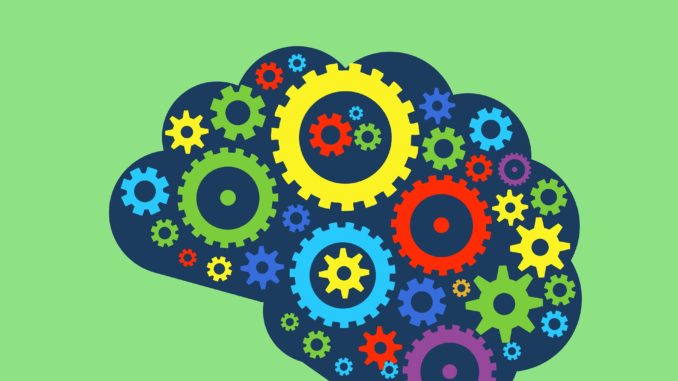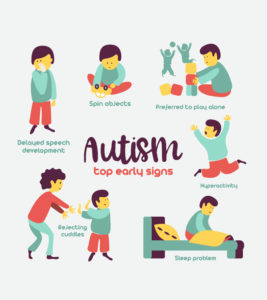
Table of Contents
What is Autism?
- Autism is a developmental disability caused by differences in the brain.
- Autism refers to a broad range of conditions characterized by challenges with social skills, repetitive behaviors, speech and nonverbal communication.
- Autism, commonly known as Autism Spectrum Disorder, refers to a variety of diseases that affect how the brain develops.
- A developmental disability known as autism spectrum disorder (ASD) affects how a person perceives and interacts with others, which can lead to issues with social interaction and communication.
- Limited and recurring behavioral patterns are another feature of autism.
- In autism spectrum disorder, the word “spectrum” refers to the broad spectrum of symptoms and severity.
Key Facts on Autism
- Autism affects one in every 100 children. However, according to the data of Center for Disease Control and Prevention (CDC) of 2022, autism affects an estimated 1 in 44 children in the United States.
- Early childhood may allow for the detection of certain traits, however it is frequently not diagnosed until much later.
- People with autism have a variety of skills and requirements, which might change over time. Despite the fact that some autistic individuals may live independently, others have severe difficulties and need ongoing care and assistance.
- Evidence-based psychosocial therapies have a favorable effect on the well-being and quality of life of autistic people as well as their caregivers through enhancing communication and social skills.
- Actions at the community and social levels must go hand in hand with care for people with autism to promote greater accessibility, inclusivity, and support.
When is Autism Seen?
- Signs of autism can be usually seen by the age of 2-3 years
- However, some signs can be even seen as early as 18 months
Causes
- The National Institute of Neurological Disorders and Stroke (NINDS) claims that a person’s susceptibility to developing autism may depend on both heredity and environment.
- It is unclear what specifically causes it as there is no single cause, according to the most recent researches.
Following are a few possible risk factors for autism:
- Having a member of one’s direct family with autism or having particular genetic variants
- Hereditary diseases such as fragile X syndrome
- Having elderly parents
- Metabolic disorders brought on by low birth weight
- Exposure to environmental contaminants and heavy metals
- A mother who has experienced viral illnesses
- Exposure to thalidomide or valproic acid during pregnancy
Signs and Symptoms of Autism

Autism-related behaviors can be divided into two categories: restricted and repetitive behaviors and interests, and impaired social interaction and communication.
The following are some common autistic signs and symptoms:
- lack of gestures like pointing, smiling, or demonstrating things
- absence of nonverbal cues such head nodding, head shaking, and hand motions
- lack of close friends and difficulty forming and maintaining connections that are age-appropriate
- delayed understanding of speech and articulated speech
- speaking without making eye contact
- loss of language abilities at any age
- excessive routine or pattern following and distress at change
- stereotypical or repetitive language, gestures, or uses of things, such as toe walking, flapping hands, or rolling wheels in front of the eyes
- reacting strongly to sensory input like sound, pain, or sensations
- confined or concentrated interests, such as only using a certain set of toys or talking about a particular subject
- being aggressive, either against oneself or others
Types of Autism
1. Autistic Disorder
- This autism is commonly referred to as “classic.”
- People with autistic disorder typically exhibit odd habits and interests, major language impairments, and communication and social difficulties.
- There are many autistic disorder sufferers who also have intellectual disabilities.
2. Asperger Syndrome
- Typically, individuals with Asperger syndrome exhibit less severe autistic disorder symptoms.
- They may experience social difficulties and exhibit strange habits and interests.
- Nevertheless, they frequently do not experience issues with language or intellectual disabilities.
3. Pervasive Developmental Disorder – Not Otherwise Specified
- This is also referred to as “atypical autism.”
- Atypical autism is a diagnosis given to those who partially match the requirements for Asperger syndrome or autistic disorder but not all of them.
- Compared to others who have autism disorder, these folks typically have fewer and milder symptoms.
- Only communication and social issues could result from the symptoms.
4. Rett syndrome
- Rett syndrome affects 1 in 10,000 women and men very infrequently.
- When infants between the ages of 6 and 18 months start to miss developmental milestones or start to lose previously learned skills, it is frequently diagnosed.
- A child with Rett syndrome experiences severe deficiencies in practically every aspect of their daily life.
5. Childhood disintegrative disorder (CDD)
- Although each person’s CDD onset is unique, it typically appears after age three.
- The child will lose previously acquired abilities in social, verbal, and motor (connected to movement) functioning because of its late beginning.
- Even while the precise reason of onset is uncertain, some experts think that the disorder is a form of infantile dementia brought on by an amyloid protein buildup in the brain..
Preventive Measures
- Primary autism prevention would involve making changes to its underlying causes before conception and during pregnancy in an effort to boost resiliency and lessen incidence.
- The goal of secondary or tertiary preventative strategies during the first two to three years of life is to change the developmental cascade that began before birth in order to lessen or even stop the emergence of autism symptomatology.
- To improve or maintain the level of adaptability and the wellness of the autistic person from childhood and adolescence through adulthood and old life, and with the ASD fully present, preventative measures are mostly of the secondary and tertiary levels.
- They will also stop secondary issues from developing, such extremely disruptive behaviors, depression, transitional difficulties, etc.
Solutions/Treatment
- Autism spectrum disorder has no known cause or treatment that works for everyone.
- The aim of treatment is to improve your child’s functioning by minimizing the symptoms of autism spectrum disorder and fostering growth and learning.
Treatment choices could be:
- Treatments for behavior and communication.
- Therapies in education.
- Family counseling
- Using social-relational methods
- Pharmaceutical therapy
- Psychological counseling
WHO Response on Autism
- Providing direction on policies and action plans that address autism within the broader framework of health, mental and brain health, and disabilities
- Strengthening the capacity of the health workforce to provide appropriate and effective care and promote optimal standards of health and well-being for people with autism
- Promoting inclusiveness are all ways that governments can commit to improving the quality of life for people with autism.
References and For More Information
https://www.who.int/news-room/fact-sheets/detail/autism-spectrum-disorders
https://www.cdc.gov/ncbddd/autism/facts.html
https://www.autismspeaks.org/what-autism
https://www.psychiatry.org/patients-families/autism/what-is-autism-spectrum-disorder
https://speechandot.com/what-are-the-types-of-autism-spectrum-disorder/
https://www.healthline.com/health/autism
https://www.ncbi.nlm.nih.gov/pmc/articles/PMC7911370/